Editors
Interviews - Editors
-
“I Like to Channel Musicality Into the Act of Editing”: Editor Adam Dicterow on Mutt
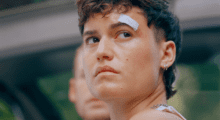
Feña (Lío Mehiel) is a 20-something trans guy living in Brooklyn in Mutt, the feature debut from writer-director Vuk Lungulov-Klotz. His life is instantly thrown into tumult when a series of people reenter his life unexpectedly, leading to the opening of old wounds. Editor Adam Dicterow talks about the process of cutting Mutt, also offering insight on how lucky he felt to work on the film in the first place. See all responses to our annual Sundance editor interviews here. Filmmaker: How and why did you wind up being the editor of your film? What were the factors and attributes that […]
-
“The Best Tool for Capturing Human Behavior”: Editors Axel Danielson and Maximilien Van Aertryck on Fantastic Machine
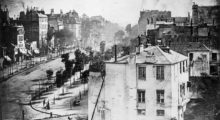
Co-directors, cinematographers, producers and editors Axel Danielson and Maximilien Van Aertryck embark on a meticulous dissection of “image-making and a mapping of its movement through society” in Fantastic Machine, the duo’s documentary that utilizes a large catalogue of archival footage to make its point. Danielson and Aretryck discuss the intricate editing process they undertook for the film along with another co-editor Mikel Cee Karlsson. See all responses to our annual Sundance editor interviews here. Filmmaker: How and why did you wind up being the editor of your film? What were the factors and attributes that led to your being hired for […]
-
“I Consider Myself a Sensitive Person”: Editor Carolina Siraqyan on The Eternal Memory
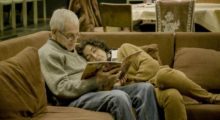
The Eternal Memory, the latest from Chilean documentary filmmaker Maite Alberdi, follows a couple on a difficult journey after husband Augusto is diagnosed with Alzheimer’s. They have been married for 25 years, and August has lived with the disease for eight years at this point. As his memory fades, wife Paulina takes care of him and ensures that above all, Augusto is cognizant of how much he is loved—even if he eventually forgets the woman who provides it for him. Editor Carolina Siraqyan talks about cutting the film and the process of working with Alberdi. See all responses to our […]
-
“…Feminist Thought and Knowledge of Bodies With a Vulva Have Been Suppressed Over and Over Again”: Editor Eileen Meyer on The Disappearance of Shere Hite

Still one of the bestselling books of all time since its publication in 1976, The Hite Report offered a groundbreaking look at women’s sexual desires through anonymous survey responses. Despite its success at demystifying vulvas and those who possess them, the book’s author Shere Hite has remained a relatively obscure figure in popular culture. Filmmaker Nicole Newnham’s latest, The Disappearance of Shere Hite, attempts to bring this woman back into relevancy while investigating why her legacy has gone unspoken for so long. Editor Eileen Meyer tells Filmmaker about her experience cutting this project, also offering insight on she came to work […]
-
“I Like To Edit Ideas, Not Sequences”: Editor Geraldine Mangenot on Other People’s Children
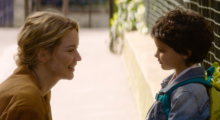
In Other People’s Children, the latest from director Rebecca Zlowtowski, a woman in her 40s named Rachel (Virginie Efira) grapples with the idea of being a mother—as well as the idea of going down a child-free path. Editor Geraldine Mangenot, who’s worked with Zlowtowski since her 2019 film An Easy Girl, discusses how being a mother herself influenced the film’s edit. See all responses to our annual Sundance editor interviews here. Filmmaker: How and why did you wind up being the editor of your film? What were the factors and attributes that led to your being hired for this job? Mangenot: […]
-
“We Would Light a Candle and Some Impepho at the Start of the Work Day”: Editor Hankyeol Lee on Milisuthando
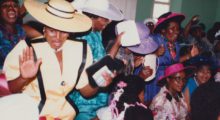
Milisuthando, the five-part personal essay film from first-time director Milisuthando Bongela, utilizes a trove of unseen archival images of South Africa during apartheid, particularly the all-Black Transkei community that Bongela grew up in. As such, editor Hankyeol Lee had a lot of material to sift through while remaining attentive to the intimate and oft-sensitive details of Bongela’s—and an entire nation’s—traumatic reckoning. Lee tells Filmmaker about how they went about editing the film, including a ritual she and the director would practice in the cutting room. See all responses to our annual Sundance editor interviews here. Filmmaker: How and why did you […]
-
“I Usually Prefer To Embrace the Rushes as a Whole”: Editor Hoping Chen on Drift

Drift, the latest feature from Singaporean director Anthony Chen, follows Jacqueline (Cynthia Erivo), who finds herself struggling to scrape by on a Greek island after fleeing Liberia during the war. The daughter of a wealthy government loyalist, this new rough and tumble lifestyle is far from the luxurious life she used to live. When she meets Callie (Alia Shawkat), an American tourist traveling solo, she is charmed and takes a risk by forming a connection with her. Chen’s longtime editor Hoping Chen discusses the process of working on this film, revealing many of his established cutting habits. See all responses […]
-
“The Tonal Balance Was a Bit of a Tightrope”: Editor Jacob Craycroft on Cat Person
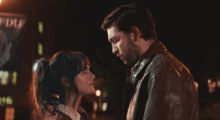
Cat Person, the viral short story that originally appeared in The New Yorker is now a feature film from director Susanna Fogel. Editor Jacob Craycroft tells Filmmaker about bringing the re-imagined feminist cautionary tale to life in the cutting room. See all responses to our annual Sundance editor interviews here. Filmmaker: How and why did you wind up being the editor of your film? What were the factors and attributes that led to your being hired for this job? Craycroft: As with most of my jobs that aren’t with repeat filmmakers, this came through my agent. I had read the short […]
-
“It’s Great When an Idea Is Transformed So Much That the Author Is Rendered Unknown”: Editor Jon Philpot on Theater Camp

A dysfunctional summer camp for thespians in upstate New York is the setting of Theater Camp, the co-directing effort of Molly Gordon (who also stars as quirky counselor Rebecca-Diane) and Nick Lieberman. Editor Jon Philpot discusses the process of cutting the mockumentary-style film. See all responses to our annual Sundance editor interviews here. Filmmaker: How and why did you wind up being the editor of your film? What were the factors and attributes that led to your being hired for this job? Philpot: The directors, Molly Gordon and Nick Lieberman, found me on IMDB while looking for editors that worked on […]
-
“From the First Assembly, I Knew the Film Was There”: Editor Lindsay Armstrong on Young. Wild. Free.
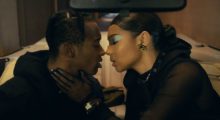
Teenagers Brandon (Algee Smith) and Cassidy (Sierra Capri) form a perilous romance that rivals Bonnie and Clyde’s in Young. Wild. Free., director Thembi Banks’s feature debut. Filmmaker asked editor Lindsay Armstrong about her experience cutting the film, including the unexpected importance of VFX. See all responses to our annual Sundance editor interviews here. Filmmaker: How and why did you wind up being the editor of your film? What were the factors and attributes that led to your being hired for this job? Armstrong: Director Thembi Banks and I met and became good friends while working towards our MFAs in Film Production […]
